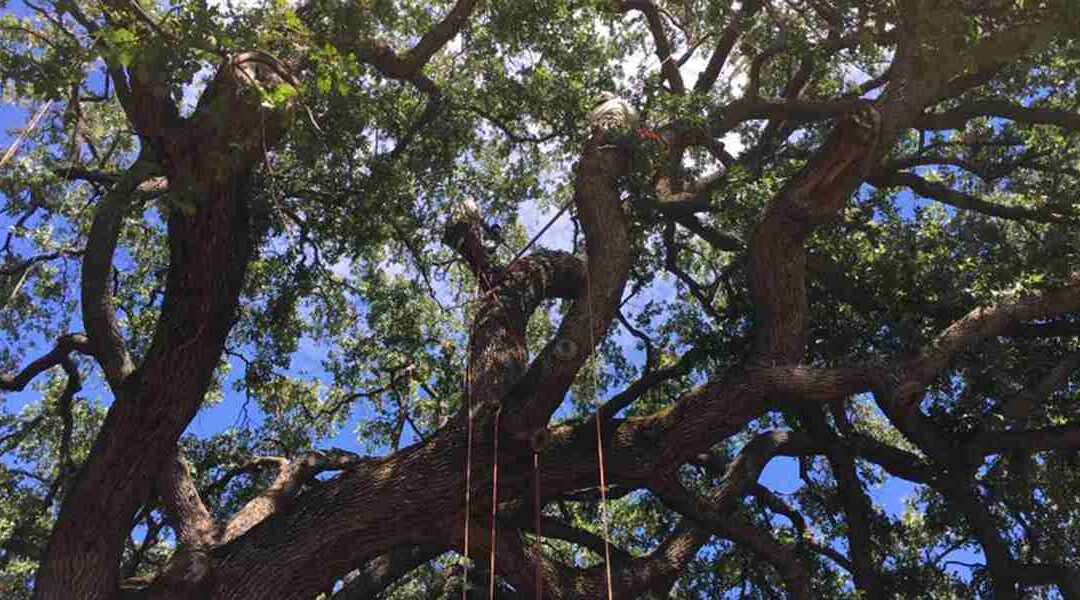Do you need to know how to bring a tree out of dormancy? As the leading independent tree service contractors in Sacramento, CA, our licensed arborists at Fallen Leaf Tree understand why business owners and residents might feel worried about their tree’s well-deserved downtime. Are the trees overwintering or maybe even dying?
Below, our licensed arborists outline how property owners could bring a tree out of dormancy in California if they felt the need to help it along. But if you want peace of mind, hire a professional for a proper diagnosis of tree health and plant growth in your garden.
How Does the Process of Dormancy Work?
Is your tree a little sleepy? Most tree species experience dormancy in early autumn when temperatures begin dipping below 40 degrees Fahrenheit. However, a tree in dormancy will still exhibit healthy bark, despite slowing its internal processes or losing its leaves.
Most tree species go through dormancy at least once a year. However, they are highly reactive to global warming. When your leaves fall off or fruit grows out-of-season, it could be an adaptation to unpredictable weather patterns.
In colder states like Minnesota and Montana, winter conditions last five to seven months, and extended dormancy is prevalent. This self-winterization helps trees weather prolonged periods of sub-zero temperatures when nutrients are scarce and absorbing water can freeze internal tissues. Winter’s shorter days also starve trees and plants of daylight hours to photosynthesize.
However, overwintering is generally not an issue in Sacramento, which is almost always sunny. Summers are long and humid here. Still, there are four main steps a tree takes as it enters dormancy:
- First, new buds that grew too late into autumn will die as your tree shuts down.
- Second, your tree’s canopy will downsize its coverage area and density.
- Third, the tree will focus more energy on regulating internal temperatures, slowing growth.
- Finally, full dormancy sets in, slowing the flow of moisture and nutrients from the tree’s roots to its branches.
How Long Does Tree Dormancy Last?
If you’re asking how to bring a tree out of dormancy, you might be concerned that your tree is either dead or dying. However, tree care professionals like Fallen Tree Leaf cannot specify the number of weeks for how long dormant periods last. Trees have different hardiness levels and hormonal structures, and nonresident species might break buds early or a bit late.
Most trees in urban environments stay dormant for at least 60 days a year. When ambient temperatures return to 40 degrees, they stop producing abscisic acid and exit dormancy.
How to Safely Bring a Tree Out of Dormancy
Do you really want to wake up your plants and trees early? Remove nearby obstructions to speed up their transition from dormancy into photosynthesis. However, new growth may still die off until the freezing temperatures pass and the winter melts into spring.
Many arborists believe trees do a fine job surviving without human intervention. Breaking them out of dormancy early can harm them, as tree immune systems are less resistant to fungal and viral infections during dormant periods. Overwatering might also encourage microbial infections.
Potted plants with sufficient drainage can keep themselves from drowning even in the torrential winter rain, so they might bloom early. With trees, it is better to wait until you spot new growth before slowly returning to your usual watering routine to keep them blooming. At this point, our arborists recommend fertilizing your trees with diluted organic to help them wake up.
Contact The Tree Experts Today!
Do you want to learn more about the types of trees in California or how to bring a tree out of dormancy safely? Call Fallen Leaf Tree at 916-447-8733 today!

